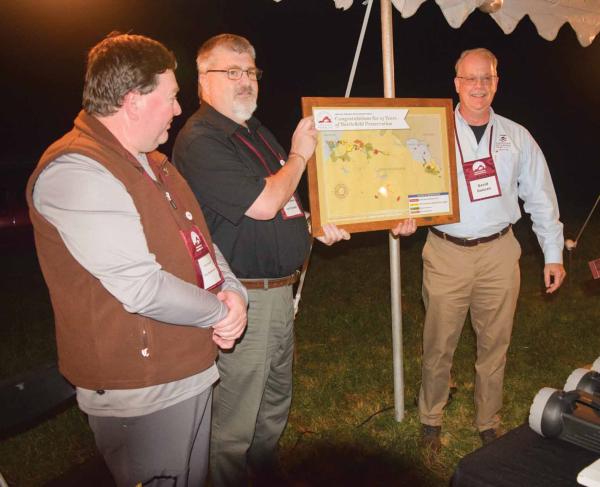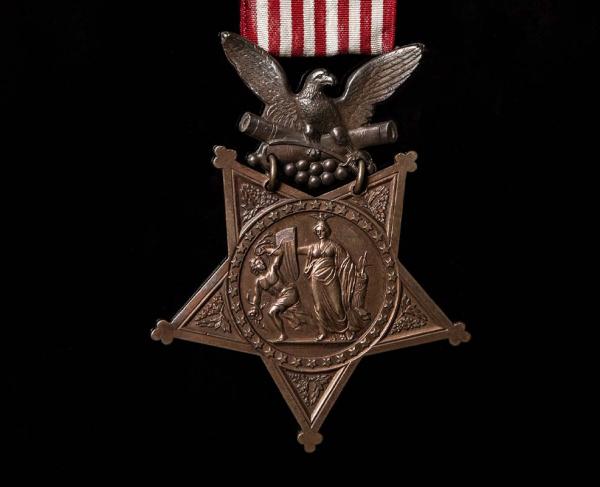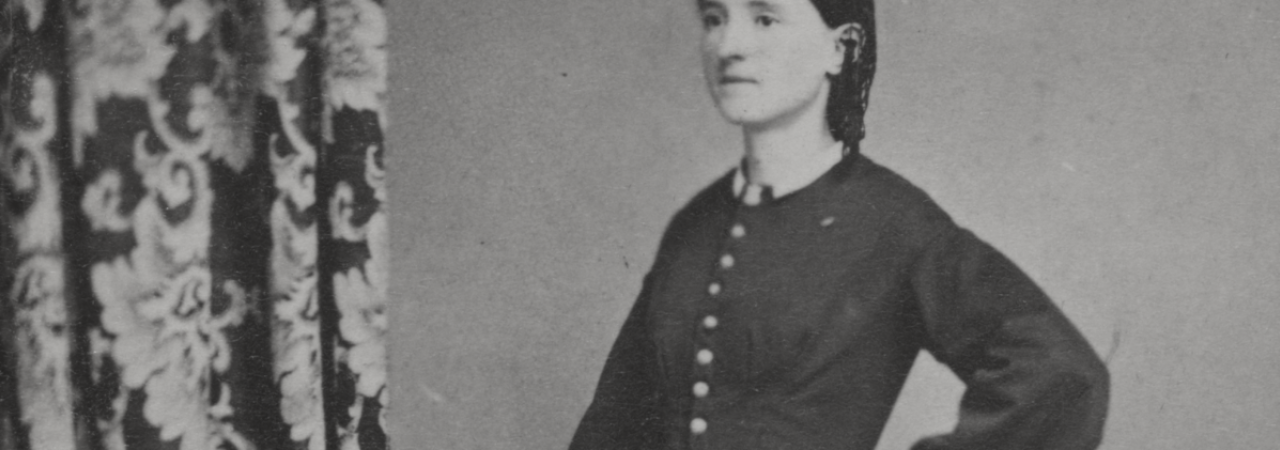
Over the course of our nation’s history, more than 3,500 military personnel have received the Medal of Honor, the nation’s highest decoration for military service. Out of that number, 1,522 medals were presented as a result of the Civil War. Only 82 Medals of Honor have been awarded to medical personnel to date. Out of the 82 who received this prestigious honor while serving in the medical corps, only one was awarded to a woman: Dr. Mary Edwards Walker.
Mary Walker was born on November 26, 1832, in Oswego, New York, the youngest of seven children of Alva and Vesta Walker. Growing up in a progressive family, Mary was encouraged by her parents to think for herself, question theologies, and challenge gender roles. While growing up on the farm, Mary often helped with outdoor farm chores wearing men’s clothing since dresses were too constricting. She believed that even as a woman, she should be permitted to perform whatever work she chose, and while engaged in that profession, she was entitled to the same treatment as a man. This belief helped to shape major components in her life: becoming a doctor and participating in the struggle for women’s rights.
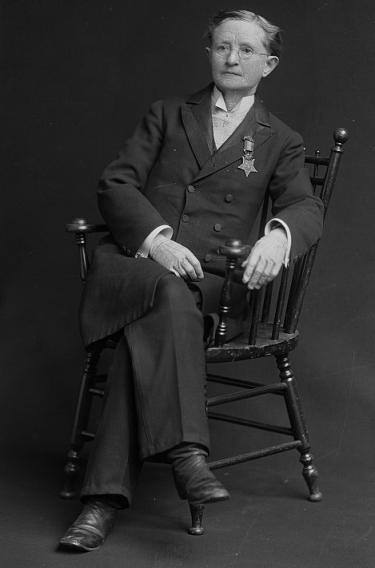
Mary was well educated. As a young woman, she attended several different schools including one founded by her parents. She studied at Falley Seminary in Fulton, New York, where she was introduced to contemporary social reforms such as gender roles, education, and hygiene. While attending Falley Seminary, her interest in medicine was peaked and she spent her free time reading her father’s medical texts, teaching herself about physiology and anatomy. After becoming a teacher, she was able to save enough money to enroll at Syracuse Medical College, which had started accepting female students since the 1840s. She studied under the school’s founder, Dr. Stephen Potter, who taught the practices of surgery and obstetrics—childbirth. While at school, she attended lectures, interned with a licensed doctor for hands-on experience, and worked as a subscription agent for Dr. Potter’s journal, “The American Medical and Surgical Journal”, which he edited. In 1855, Mary Walker graduated with honors, the only woman in her class.
Shortly after she graduated, Walker married one of her classmates, Albert Miller, but refused to sacrifice her progressive views on marriage. She did not change her last name for a name is “as dear to her as a man’s is to him," she wore trousers with a dress coat over them and refused to say “obey” in the vows. Mary and Albert established a medical practice in Rome, New York aptly named “Miller and Walker, Physicians”. However, the practice only lasted four years when Mary discovered that Albert was unfaithful to her. She threw Albert out and demanded a divorce, something hard to acquire in the 19th century. A woman had to prove a man’s adultery, often difficult to do, and in New York, there was a five-year waiting period for a divorce to be carried out. In the 19th century, most women had to live with a husband’s unfaithfulness, and Albert suggested the same, but Walker vowed she “would never [be] with a man that was so vile as to make such a proposition to a wife, and that people who thought her so happy knew little of her wretchedness."
Walker left the medical practice and set off on her own opening up a new office in Rome in 1860 offering people the choice to be treated by a female physician. In the Rome Sentinel Walker placed an ad reading “those who prefer the skill of a female physician to that of a male, have now an excellent opportunity to make their choice”. Unfortunately, she was forced to close her practice since she did not get enough patients. However, the lack of patients soon changed with the start of the Civil War. Walker traveled to Washington D.C. in the hopes of joining the U.S. Army as a surgeon.
Being a woman, Walker was denied a commission as a medical officer, but that did not stop her from practicing medicine. Instead, she volunteered as an unpaid surgeon throughout a variety of different hospitals in Washington, eventually finding her way to the Patent Office Hospital named for its location in the U.S. Patent Building. Walker had heard that the head surgeon at this hospital, Dr. J. N. Green, did not have an assistant surgeon and was constantly overworked. Dr. Green wanted to hire Walker, however, he did not have the ability to do so, and both the Secretary of War Edwin Stanton and Surgeon General Clement Finley denied the request. Even though she could not get paid, she still volunteered to assist Dr. Green. The doctor was so grateful he offered to pay her out of his own salary. At the Patent Office Hospital, Dr. Walker was able to make an impact on the soldiers that she saw. Many were surprised at the appearance of a woman as a surgeon, especially one dressed in men’s clothing, but were impressed with her work. Walker remarked, “the soldiers would say that they had rather see me than have anything brought to them because they knew that I knew so much, and they would consult me regarding their cases.”
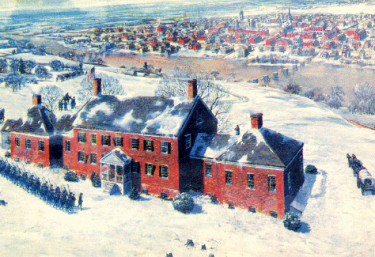
Walker did not stay in Washington for long. In 1862 she traveled near the front lines to volunteer in the field hospitals in Fredericksburg, Virginia. Mary worked out of the Lacy House (more commonly known as Chatham) in Falmouth, Virginia, treating soldiers and preparing them for travel to Washington D.C. to make a full recovery. Walker’s appearance was a bit more perceptive at Chatham because of the number of causalities. When she arrived, she was “directed by the managing surgeons to take any case [she] chose and dress them preparatory to sending them to Washington.” While in Falmouth, Dr. Walker encountered many other prominent figures including Walt Whitman and Clara Barton. By the end of her time in Falmouth, it was easier for Walker to travel between the front lines and Washington D.C.to work at a variety of hospitals. Even though she was still a volunteer, she associated with the U.S. Sanitary Commission as well as received the unspoken approval from General Ambrose Burnside, making othering officers willing to do the same. Over the course of the war, Walker traveled to Warrenton, Aquia Creek, and Chattanooga to treat soldiers behind the front lines. Yet, despite her growing reputation, she was continually denied requests to become more involved in the war effort in an official capacity, both as a surgeon and spy.
It was not until September 1863 that Dr. Mary Edwards Walker finally received a commission in the U.S. Army as a “Contract Acting Assistant Surgeon (civilian)” in the Army of the Cumberland. In this role, she served as an assistant surgeon with the 52nd Ohio Infantry at Chickamauga, Georgia. During the campaign, not only did she treat the men of her unit, but the local civilians as well, traveling into Confederate territory making medical, dental, and surgical calls. Eventually, Walker became a familiar sight in the area, but it was not without risk. Not only was she treating civilian patients, she was also gathered intelligence keeping her eyes and ears open for any information that might provide insight about the Confederate military and Southern civilians that could be of use to General William T. Sherman. This eventually caught up with her when in April 1864, she was arrested as a spy and sent to Castle Thunder in Richmond, Virginia, as a prisoner of war.
At Castle Thunder, Walker was one of about 100 women imprisoned in what was formerly a tobacco warehouse. Conditions within the Confederate Prison were horrendous. Originally meant to hold 1,400 prisoners, more than 3,000 people were incarcerated in Castle Thunder with little access to food, medicine, and clean clothing. Walker’s presence as a female surgeon wearing men’s clothing created quite a stir in the Confederate Capital. Newspapers such as the Richmond Examiner and the Richmond Dispatch recorded her time in Richmond poking fun at Walker, questioning her title as a doctor, calling her ugly, skinny, old, and making fun of her clothing. Walker was actually read some of these papers and send rebuttals to the newspapers. Though she was promised a quick transfer by Brig. Gen. William Gardner, it did not come soon, and Mary suffered for it. Walker remembered her prison time, describing how “in the warm nights bed vermin came out to feast on her, and they were all sizes, and she was employed in exterminating them until the small hours [of] the morning." There was not enough food to eat, and what food there was, was not enticing for the bacon was rotten, there were worms in the peas and vermin in the rice.
Mary stayed imprisoned in Castle Thunder until August 9, 1864, when she boarded the steamer John Brooks and headed to City Point, Virginia as part of a prisoner exchanged. Her name was listed in the exchange as “the notorious Miss Dr. Mary E. Walker, Surgeons of the 52nd Ohio Regulars.” During the remainder of the war, Dr. Walker did not remain idle. Her contract with the U.S. Army expired on August 23, 1864. She traveled west to join up again with the 52nd Ohio who were then campaigning with General Sherman on the Atlanta Campaign. During her travels west, she was offered a position caring for the female refugees and prisoners in Louisville, Kentucky as well as a refugee hospital in Clarksville, Tennessee.
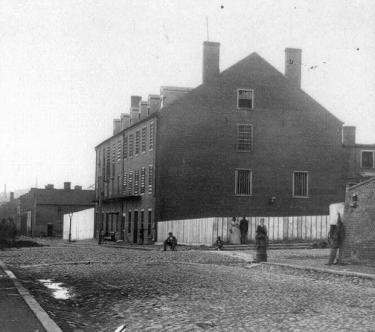
With the end of the war, Walker again wrote to the Secretary of War requesting a commission in the military, but it was denied for “there is no law or precedent which would authorize it,” but nine days after her request was denied, President Andrew Johnson awarded her the Medal of Honor for her actions as an “Assistant Surgeon-in-Charge of female prisoners at Louisville”, and as a “Contract Surgeon in the service to the United States”, as well as her “patriotic zeal” and “hardships as a prisoner of war four months in a Southern prison." However, in 1917, her award was rescinded along with many others when the eligibility guidelines were changed. She refused to give up her metal, wearing it for the rest of her life. In 1977, the honor was restored to her posthumously.
Though she was never able to join the military, Walker remained active in medicine and activism for the remainder of her life. She was an active writer, publishing articles in newspapers striving for change and sharing her beliefs for reform. In 1871, she published Hit: Essays on Women’s Rights, featuring articles on marriage, divorce, religion, temperance, tobacco, suffrage, work, and dress code. The last subject of which she advocated for all her life wearing “bloomers” or “reform dress” a shorter skirt with pants underneath or wearing trousers. In fact, she was arrested in New Orleans in 1871 for wearing men’s clothing, to which she remarked “I don’t wear men’s clothes, I wear my own clothes”. She argued for suffrage, trying to register to vote in 1871 to which she was denied. She even tried to run for a seat in the U.S. Senate in 1881 and Congress in 1890, which she lost. Though she lost, she still testified in front of the House of Representatives in 1912 and 1914 supporting women’s suffrage. While Dr. Walker was an enthusiastic supporter of women’s suffrage, temperance, and more, but she not able to join large organizations such as the National Woman Suffrage Association with Elizabeth Cady Stanton, Lucy Stone, and Susan B. Anthony for they felt her methods were too extreme. Instead, Dr. Walker continued to advocate in her own way. In 1897, Walker wrote:
I am the original new woman...Why, before Lucy Stone, Mrs. Bloomer, Elizabeth Cady Stanton and Susan B. Anthony were—before they were, I am. In the early '40's, when they began their work in dress reform, I was already wearing pants...I have made it possible for the bicycle girl to wear the abbreviated skirt, and I have prepared the way for the girl in knickerbockers.
Dr. Mary Edwards Walker passed away in her home on February 21, 1919, at 86 years old. She was buried at Rural Cemetery in Oswego, New York, wearing a black suit, a testament to her beliefs until the very end.
Throughout her life, Dr. Mary Edwards Walker, did not let the confines of society determine her role in life. She became a physician during a time when it was male-dominated profession, she challenged the clothing standards of her time, and actively fought for what she believed in and what she thought was right her entire life. She summed up her life perfectly when she said, “I will always be somebody," and her story serves as an excellent reminder for individuals to pursue their dreams and what they believe in.
Further Reading
- Dr. Mary Walker: An American Radical, 1832-1919 By: Sharron M. Harris
- Dr Mary Walker's Civil War By: Theresa Kaminski
- Yankee Women: Gender Battles in the Civil War By: Elizabeth D. Leonard
- Hit: Essays on Women's Rights By: Mary E. Walker
To restore land and history at Gettysburg, Cold Harbor, Slaughter Pen Farm and New Market Heights, we must raise $131,000. Please help to finish the...
Related Battles
12,500
6,000
16,170
18,454

